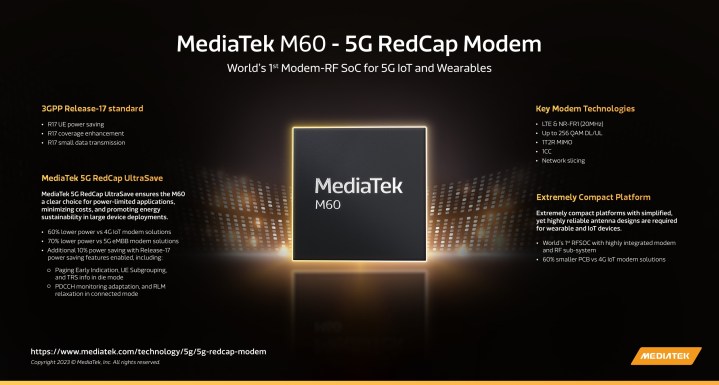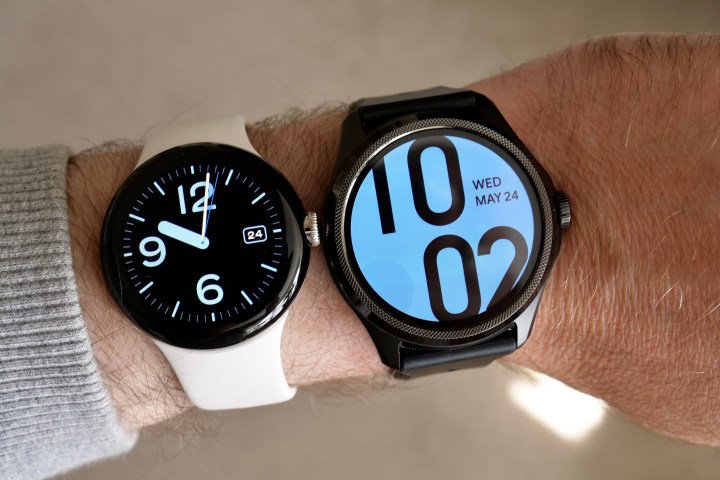
One of the biggest promises of 5G technology isn’t merely faster performance but rather the ability to power a far more connected world — a global network where every device can get online from just about anywhere.
That’s the vision behind MediaTek’s new M60
Reduced capability for greater efficiency

MediaTek’s new
The tradeoff is that you don’t get the eye-watering
Instead, the MediaTek M60 is targeted at devices like smartwatches, lightweight augmented reality and virtual reality (AR/VR) headsets, IoT devices, and industrial sensors. These devices all benefit from ubiquitous connectivity, but they sip data compared to other connected devices like smartphones and tablets, and they don’t have nearly as much power to spare.
This is where MediaTek’s RedCap chips make a big difference. The M60 modem and MediaTek T300 chip make up the world’s first 6nm Radio Frequency System-On-Chip (RFSOC) single die RedCap chip, which allows for a smaller size and greater power efficiency.
Using a single-core Arm Cortex-A35 in a compact design, the chip can handle download speeds of up to 227Mbps and upload speeds reaching 122Mbps — and it does it while consuming 70% less power, thanks to MediaTek’s UltraSave 4.0 technology.

More significantly, the new
“Our RedCap solutions are a significant part of our mission to democratize
MediaTek plans to send out its first T300 series devices to sample early next year, where they’ll hopefully find their way into the first commercial products by late 2024.
Editors' Recommendations
- Visible’s affordable 5G plans just got even cheaper
- Visible just made its unlimited 5G plan better than ever
- Have T-Mobile? Your 5G service is about to get much faster
- This tiny dongle will change 5G connectivity forever
- T-Mobile just set another 5G speed record




